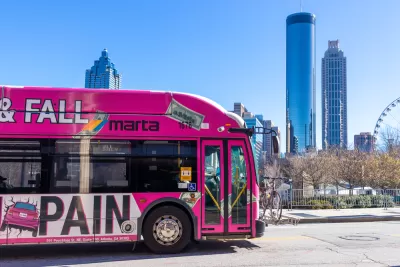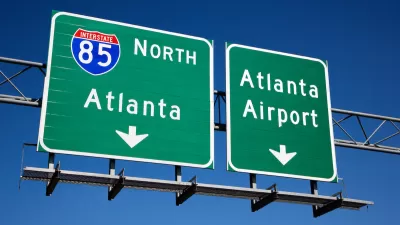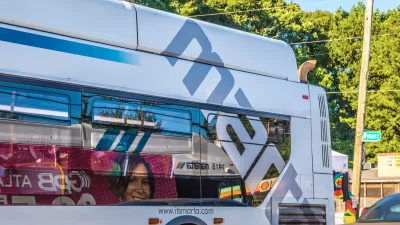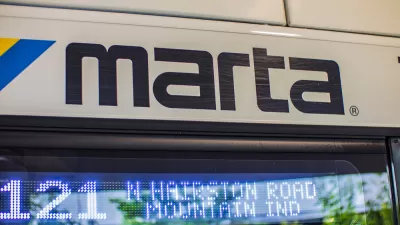MARTA officials argue that bus rapid transit will be faster and more cost-effective than the originally proposed light rail option.

The Metropolitan Atlanta Rapid Transit Authority (MARTA) is downgrading a planned light rail route to bus rapid transit (BRT) in an effort to cut costs, reports Tyler Wilkins in BizJournals.
“The plan involves running buses in dedicated lanes through the Druid Hills and North Decatur areas. The route would travel between the Lindbergh Center and Avondale rail stations.” The agency is also considering an arterial rapid transit (ART) route along Clairemont Avenue, which would put buses in shared lanes with traffic signal prioritization.
“It could cost up to $2.9 billion to construct a light rail line for the project, compared with $1.4 billion for BRT and ART, according to MARTA estimates in 2031 dollars.” Wilkins adds that operational costs are also lower for BRT than rail, and could be completed sooner than a rail line. Ride time would only be around a minute longer on the bus than the train.
“Assuming both BRT and ART routes make it into the final plan, anywhere between $400 million to $800 million is needed for the portion in DeKalb County, according to MARTA's estimates.” The Atlanta portion would be funded by the $2.7 billion More MARTA program, a voter-approved initiative that dedicates a half-cent sales tax increase to transit projects.
FULL STORY: MARTA favors bus over rail for Clifton route in Atlanta, DeKalb County

Study: Maui’s Plan to Convert Vacation Rentals to Long-Term Housing Could Cause Nearly $1 Billion Economic Loss
The plan would reduce visitor accommodation by 25,% resulting in 1,900 jobs lost.

North Texas Transit Leaders Tout Benefits of TOD for Growing Region
At a summit focused on transit-oriented development, policymakers discussed how North Texas’ expanded light rail system can serve as a tool for economic growth.

Why Should We Subsidize Public Transportation?
Many public transit agencies face financial stress due to rising costs, declining fare revenue, and declining subsidies. Transit advocates must provide a strong business case for increasing public transit funding.

How to Make US Trains Faster
Changes to boarding platforms and a switch to electric trains could improve U.S. passenger rail service without the added cost of high-speed rail.

Columbia’s Revitalized ‘Loop’ Is a Hub for Local Entrepreneurs
A focus on small businesses is helping a commercial corridor in Columbia, Missouri thrive.

Invasive Insect Threatens Minnesota’s Ash Forests
The Emerald Ash Borer is a rapidly spreading invasive pest threatening Minnesota’s ash trees, and homeowners are encouraged to plant diverse replacement species, avoid moving ash firewood, and monitor for signs of infestation.
Urban Design for Planners 1: Software Tools
This six-course series explores essential urban design concepts using open source software and equips planners with the tools they need to participate fully in the urban design process.
Planning for Universal Design
Learn the tools for implementing Universal Design in planning regulations.
Ascent Environmental
Borough of Carlisle
Institute for Housing and Urban Development Studies (IHS)
City of Grandview
Harvard GSD Executive Education
Toledo-Lucas County Plan Commissions
Salt Lake City
NYU Wagner Graduate School of Public Service





























